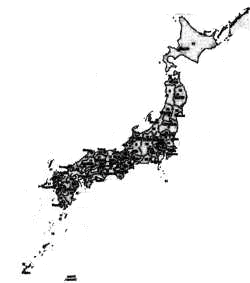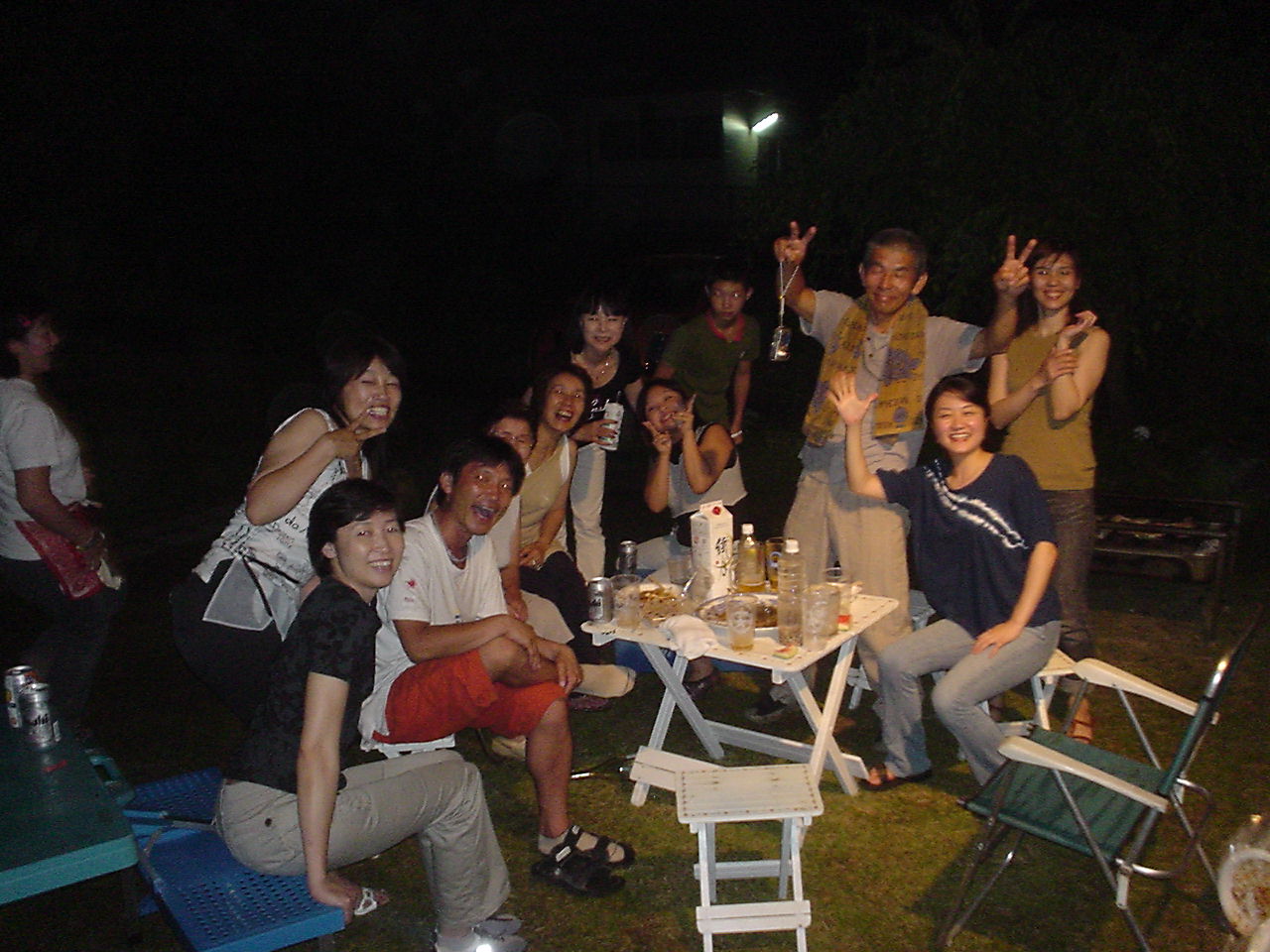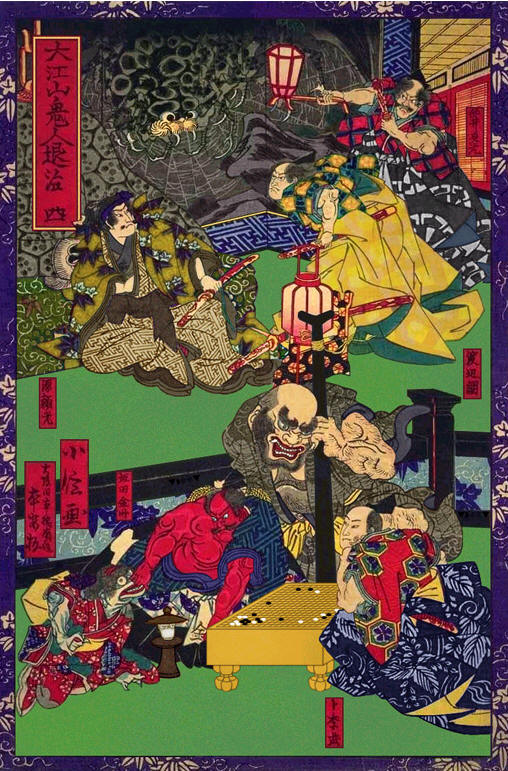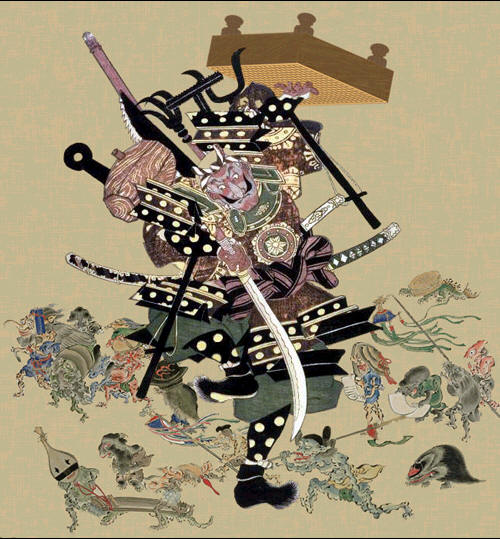In this section of
 I
will try to uncover some of the more specific aspects of the Japanese
philosophy. How
do these socially defined elements make Japan distinct from other cultures and
countries? Misconceptions, misunderstandings and mistakes are often how most gaijin
come to understand Japan. In
I
will try to uncover some of the more specific aspects of the Japanese
philosophy. How
do these socially defined elements make Japan distinct from other cultures and
countries? Misconceptions, misunderstandings and mistakes are often how most gaijin
come to understand Japan. In
SURVIVING
 I hope to give you foresight by learning from another’s
misjudgments (i.e. mine)…
I hope to give you foresight by learning from another’s
misjudgments (i.e. mine)…


Contents:
Social concepts of Japan:
* Work in progress...
# NEW ADDITION!!
Please take note that apart from a few
historical and social accounts (also see Bibliography)the content of these articles is in the majority
the opinion of the author and should be treated as such. Any remarks on the
accuracy of these articles is greatly appreciated.
Please contact me with your comments.
Chronology - A brief history of
Japan
Ancient (Kodai)
Jómon Period (Neolithic)
8000 BC – 300 BC
Yayoi Period (Agricultural)
300 BC – AD 250
Kofun Period (State Formation)
250 - 646
Nara Period
646 - 794
Heian Period
1794 - 1185
Medieval (Chúsei)
Kamakura Period
1185 - 1392
Nanbokuchó Period
1336 - 1392
Muromachi Period
1392 - 1603
* Early Modern (Kinsei)
Edo Period (Tokugawa Shogunate) 1603 - 1868 *
Modern (Kin-Gendai)
Meiji Period
1868 - 1912
Taishó Period
1912 - 1926
Shówa Period
1926 - 1989
Heisei Period
1989 – Present
* Early Modern (Kinsei)
Edo Period (Tokugawa Shogunate) 1603 - 1868 *
This was undoubtedly the most influential cultural and social
era of Japan's history. Its outcomes define modern Japan in ways even the
Japanese are not consciously aware of. This period was characterised by the rule of the
Shogun who, without going into explicit detail, shut off the borders of
Japan to ALL foreign influence. The close knit nature of Japanese society
was set in stone and for all intents and purposes this was the period when
Japanese culture flourished. Here then is a chronology of that period in
more detail:
-
1603
-
Ieyasu is appointed shogun and establishes the Tokugawa government in
Edo (Tokyo).
-
1614
-
Ieyasu intensifies persecution of Christianity.
-
1615
-
The Toyotomi clan is destroyed after Ieyasu captures Osaka Castle.
-
1639
-
Almost complete isolation of Japan from the rest of the world.
-
1688-1703 - Genroku era: popular culture flourishes.
-
1792
-
The Russians unsuccessfully try to establish trade relations with Japan.
-
1854
-
Commodore Matthew Perry forces the Japanese government to open a limited
number of ports for trade.
The long term effects of the Edo
Period on modern Japan cannot be underestimated. The strong national
consciousness and shared goals of its people are prevalent today. The
concept of Itoko-Dori
possibly also stems from the way in which Japan was for so long
isolated from the rest of the World. It is purely astounding to think that
from being a basic and isolated rural country Japan became, in a space of
less than 100 years, one of the World's biggest superpowers.
SURVIVING


Back to Top
Amae -
Japanese Dependence
This concept draws in many elements of Japanese culture. At first glance
it may seem from a gaijin perspective that Japanese people are less
independent than their western counterparts. To live in a Japanese town, or
more likely village, requires a very strong sense of each other (see
also
Shúdan Ishiki), but on the other side of the
coin there is a necessity of reliance on each other. One must be able to
assume another member of the social order around you will provide guidance
and support in times of need. The history of Japan is one of bonding
together to overcome great odds (see also Giri). The remote location of the island of Japan
and the harsh landscape to be faced within its borders meant in past eras
Japanese people had only each other to rely on to survive, and survive they
did, by assuming this dependence on each other. The dependence of Amae can
be understood as the kind of dependence a child has for its mother - In the
beginning this dependence seems one sided, but as any parent or child knows
the dependence between mother and child grows to be more mutual as time goes
on - One can assume that in Japanese social relationships the
same pattern occurs (for perspective on Amae and its role in the family also
see also Omiai). How this is different from the western perspective is
obvious as soon as you arrive in this country. To be invited for dinner or
have a caring member of your new town give you a gift (see also
Zótó) as soon as you arrive is not just a sign that people are
acknowledging your presence, but more an establishment of the obligation you
are now expected to have with that person or persons. Dinner in Japan is a
way, in the nicest terms, to say 'You can rely on me in any way I can
help - I can also now rely on you to uphold this relationship mutually'.
Any gaijin, fresh faced from the west, can thus fall into socially related
problems when for some reason unknown to them they break this mutual bond.
Situation: Your neighbour has you over for a lovely dinner of
recently deceased fish and soon after you leave the rubbish outside your house for
several days.
In the west: So what? I've got a forgetful/dirty neighbour. Maybe
I'll mention it next time I invite them for dinner.
In Japan: The mutual obligation could appear to have been broken. The
rubbish being cleared away is for the good not just of you but also of your neighbours, your whole community. You've made a social boo-boo and you
didn't even know about it.
Solution: The best way to grasp and fully be aware of Amae during
your life in Japan is to follow the age old mantra: Do unto others as
you would have them do unto you. Remember though that in Japan this
mantra spans to a much greater extent. If someone has shown you kindness, if
someone has helped you with a problem, however small, then show them some
mutual dependence back. Help them with their English, give them a gift,
invite them over for dinner and you shall surely be in pure Amae balance.
Danjyo Kankei
- Male and
female relationships in Japan
Firstly, to understand how males and females are seen in Japan one must
venture back into Japan's quite colourful history. In some of the more
distant Eras of the pas Japan was a matrilineal society. Women had the ultimate right to
succeed men to the head, and therefore ownership, of the family. There were
female leaders in Japan hundreds of years before the west started to recognise women as equals. By the end of the Heian period though men had
exerted their dominance over society and this structure was to stay in place
well up to the present day. In the closed off Edo period of Japan women were
segregated to the 'inside' of society, in that socially and personally they
were treated as inferior to the men (men outside - work, fight, pursue their
life. women inside - house, family, pursue their husband's and son's lives). Women were even taught a more delicate
form of the language, one which always assumed they were less important than
the men they talked to. This idea of women on the 'inside' and the
dominance of the male version of the language still have echoes in today's
Japan, although the intensity is quickly decreasing.
How then does the modern Japanese woman compare to the old? In times gone
by in Japan the women were assigned into obedient and delicate members of
their husband's society. Able to hold up the family unit as the men went to
work hard on the fields/as a samurai, whatever their societal role might
have been. Men were expected to learn their way into the world, be it farmer
or samurai, and stick with it, working incredibly hard, for life. Today this
model still has its obvious similarities. Men are spoiled when they are
children, for it is known that they will devote themselves completely to
their job when they come of age. Women on the other hand are encouraged to
become independent and worldly wise so that they have the best chance of
finding the best husband. This used to work towards the structure Japan is
best recognised as having, but in modern Japan, with the domestic life
becoming easier (rice cookers, vacuum-cleaners, washing machines, mass
manufactured clothes, food etc) women have a lot of time to spare and most
men still don't. A dichotomy between modern men and women in Japan is thus
arising. Men with no time who work their entire adult lives, and women who
can follow independent pursuits more readily. The
women of Japan do work very hard too, but it's not expected it's for life, what
with finding a husband, kids and so forth. So they are encouraged to travel,
learn a language, get hobbies, friends etc. conclusion: a country of more
shy, quiet, reserved yet hard working men, and more independent, strong,
confident and bilingual women. A recognised outcome of this at the moment
can be seen through the Japanese wedding and all its ceremony. In Japan the
custom is to sign the marriage papers AFTER the honeymoon. What has been happening
more frequently is that a couple will wed, whether in an
arranged marriage (see also Omiai) or a 'love marriage', and fly on holiday abroad. The woman
has good grasp of English, is confident to meet new people, can get herself
around easily and has a generally good knowledge about the said country they
are in, whereas the man is shy, more reserved, has few or no language
skills, and knows much less about the country they are in or indeed the
wider world - outcome: the man is intimidated by the woman he thought would
be a more quiet and reserved wife/mother, and the wife sees the husband for
the first time in a much more negative light (of course please remember that
I'm generalising here. There are always exceptions to any social ideal.).
The not so happy couple come home, close to hating each other, and don't
sign the marriage papers. It is a recognised, but still quite hidden problem
in Japan at the moment and it says so much about how this modern country
works. As a consequence of this, and other social instances, there is a
growing stereotype, mainly among gaijin, that Japanese women crave the love
and attention of western men. To go further into the truth is treading on
unsteady ground,
needless to say that western men alone can not hold the crown for
strongest males in the Japanese eyes. South Korean culture is gaining in
popularity in Japan, helped in no small part by a very popular Korean soap
opera which has taken Japan by storm. Korean men, much to the disbelief of
Japanese men, are seen to be freer with their emotions and able to express
their inner desires more readily. Perhaps the social freedom, the extrovert
emotion and shining lights of the west do
appeal to the Japanese consciousness, but I do believe that in not too long
a time this will diminish as Japan becomes a strong globalised culture
in the same way it has been a strong globalised economy for the last
half century.
Gambari -
Japanese patience and
determination
[A work in progress]
Giri -
Japanese social
obligations
Giri at first glance seems like the notion of
Amae and even
Zótó, but although related in part to the two
concepts Giri has its own defining aspects. Giri in the main is principle,
that of moral duty, rules in social relationships and obliged behaviour. The
principles upheld within social construction exist in all societies. Whether it
is the western custom of sending cards at Christmas or the Japanese custom of
giving gifts at new year, to not obey these principles, however much one
dislikes them, is to risk breaking apart relationships. In the rice farming
communities pre-medieval Japan, it became an upheld principle that during
seeding and harvest cooperation from all members of a community was required. To
help your farmer neighbour was expected, but it was also expected that the
farmer would show his gratitude to thank you for your help. The principle works
both ways for to work for the farmer was to presume before hand that you would
receive something in return. The return of goodwill thus became engrained in the
social harmony of Japanese life, and still continues to this day in many forms.
Gifts and cards are given at new year (oseibo gifts), in summer (ochúgen gifts)
and more recently on Valentines day. To receive but not give a gift is seen as
being ignorant of your social obligations (returning the gift is called okaeshi).
Exceptions to this rule occur around February and March when on Valentine's day
women will give gifts of chocolates to men and on March 14th men will return the
obligation. Women will often give small gifts to men they have no interest in
out of social obligation.
In modern Japan this would seem on the surface to be of little interest or
outcome, apart from possibly emptying the pockets of the Japanese, but it is
easy to see past the higher value of such harmonious gestures. A recent TV
program in Japan presented the interesting fact that the overall cost of ochúgen
and oseibo gifts each year in Japan is almost equivalent to the USA's
expenditure on justice. Keeping harmony in your relationships has the same value
as mediating your legal disputes. Giri then seems to have a crucial part in
modern Japanese life and will continue to do so for a long time to come.
[A work in progress]
Itoko-Dori -
Adopting elements of foreign culture
[A work in progress]
Omiai -
Arranged
Marriage
To understand men and women's roles in Japan (see also
Daniyo Kankei) it is also important to
grasp the concept of the arranged marriage (Omiai). In the west arranged
marriages are seen as restricting and cruel in many senses. Japanese society
though treats them quite differently and even in modern Japan the arranged
marriage has its place. Normally the Omiai is seen as more than a bond
between two people. Two families will also be joined in the ceremony and
ensuing relationship. A meeting will be arranged between a couple and if
they get on and would like to pursue the relationship further it is up to
them. But it seems that many young Japanese people see Omiai as part of the
dependence culture (see also Amae). To join two whole
families together has surely a greater outcome than two people in love alone
would have. Although 'love marriages' are on the increase in Japan, the
arranged marriage still has its place and the idea of Omiai is still quite
prominent today in Japan. The much busier, modern lifestyle of many young
men and women does not allow ample
time to find love and companionship in the more
western way and so Omiai still has its role outside the family.
Back to Top
Shúdan Ishiki -
Japanese
group consciousness
[A work in progress]
Back to Top
Zótó -
The Japanese custom of gift giving
[A work in progress]
Back to Top
Bibliography:
The Japanese Mind: Understanding
Contemporary Japanese Culture - Roger Davies, Osamu Ikeno
Everyday Japanese: A Basic Introduction to
the Japanese Language and Culture (Language - Japanese) - Edward A. Schwarz
A Traveller's History of Japan (The Traveller's History) -
Richard Tames
All Studio Ghibli
Anime :-)
All the lovely people I've met in Japan or
talked to about Japan and have generally known lots of interesting things



All photos and articles placed on this site were created by
Daniel Rourke or used by kind permission of the photographer/author.
No photos or articles should be copied, stolen, or repeated elsewhere on the web
without Daniel Rourke's personal permission
Copyright © 2004 Daniel Rourke. All rights reserved.
Revised: 03/31/05.
![]() I
will try to uncover some of the more specific aspects of the Japanese
philosophy. How
do these socially defined elements make Japan distinct from other cultures and
countries? Misconceptions, misunderstandings and mistakes are often how most gaijin
come to understand Japan. In
I
will try to uncover some of the more specific aspects of the Japanese
philosophy. How
do these socially defined elements make Japan distinct from other cultures and
countries? Misconceptions, misunderstandings and mistakes are often how most gaijin
come to understand Japan. In![]() I hope to give you foresight by learning from another’s
misjudgments (i.e. mine)…
I hope to give you foresight by learning from another’s
misjudgments (i.e. mine)…



